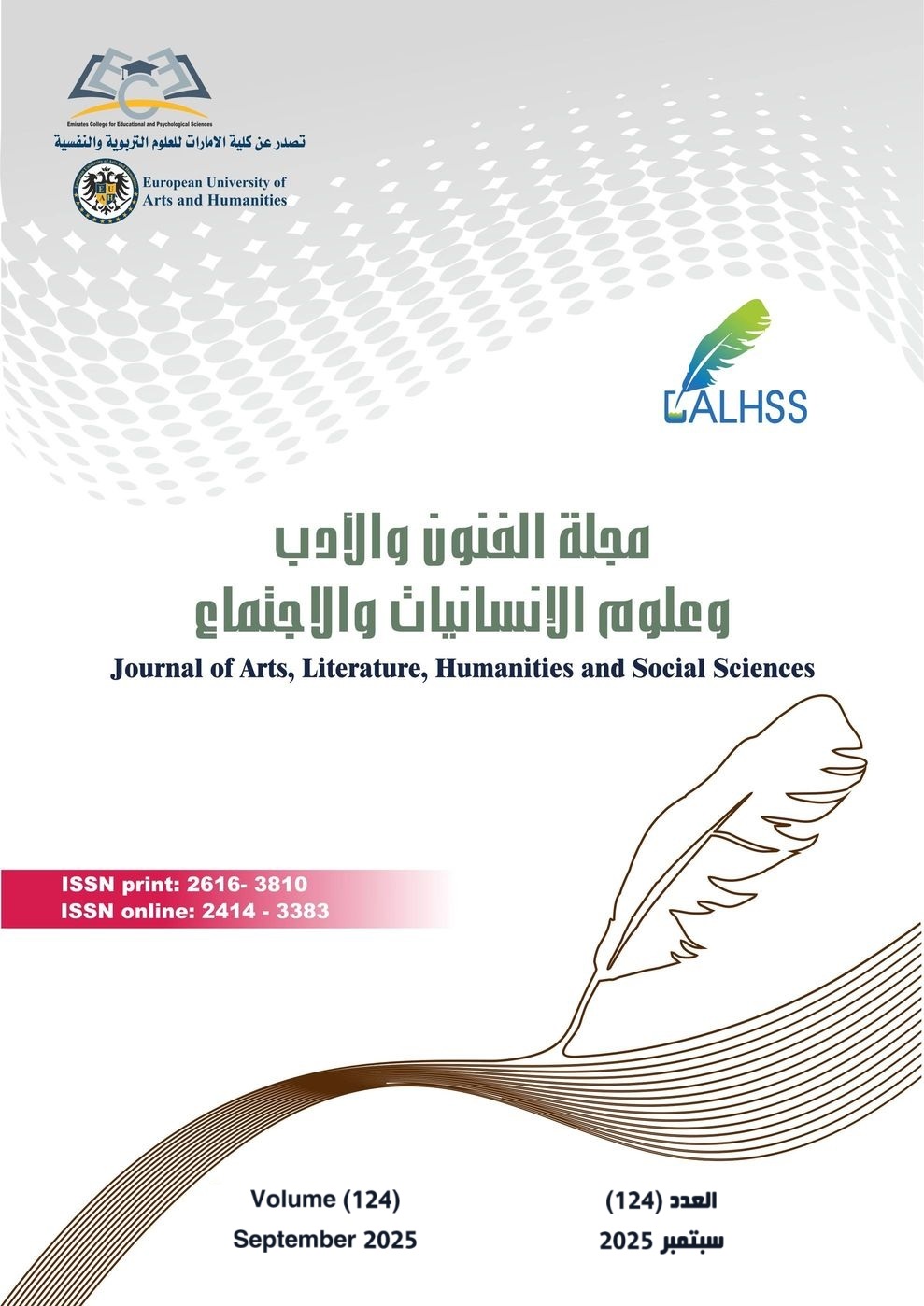إنتاج تصميمات فنية نسجية معاصرة مستلهمة من فن القط العسيري باستخدام الذكاء الاصطناعي
الملخص
يهدف هذا البحث إلى توظيف تقنيات الذكاء الاصطناعي في إنتاج تصميمات نسجية فنية معاصرة مستلهمة من فن القط العسيري، وذلك من خلال المزج بين الأصالة المتمثلة في العناصر الزخرفية للتراث السعودي والحداثة التي توفرها الأدوات الرقمية الحديثة. اعتمد البحث على المنهج الوصفي التحليلي بالإضافة إلى المنهج التجريبي التطبيقي من خلال تصميم مجموعة من النماذج النسجية بالاعتماد على الذكاء الاصطناعي، ثم عرضها على عينة من المحكمين المتخصصين في الفنون لتقييمها وفق مقياس ليكرت.
أظهرت النتائج أن التصميمات المنتجة تتميز بجودة فنية عالية من حيث التكوين والانسجام اللوني، وتعكس بوضوح الهوية الجمالية لفن القط العسيري في قالب معاصر. كما بيّنت النتائج إمكانية دمج الذكاء الاصطناعي كأداة مساعدة في تطوير أعمال نسجية قابلة للتطبيق، مما يعزز من دور التراث السعودي في إثراء التصميم المعاصر ودعم رؤية المملكة 2030، وخاصة مع إعلان عام 2025 عامًا للحِرف والفنون اليدوية.
المراجع
2. الصياد، غ. م. (2025). الصياغات المعاصرة لوحدات فن القط العسيري كمدخل لاستلهام تذكارات سياحية. مجلة العمارة والفنون والعلوم الإنسانية، 10(1)، 45–60. الجمعية العربية للحضارة والفنون الإسلامية.
3. زكريا، ف. م. هـ. (2019). فلسفة القط العسيري ودور المرأة في نقل الموروث الثقافي الحرفي لإثراء المعلقات النسيجية وتنشيط التسويق السياحي السعودي. مجلة العمارة والفنون والعلوم الإنسانية، 15(3)، 460–484. https://doi.org/10.21608/MJAF.2019.11741.1112
4. مرزوق، ع. ع. (2010). فن زخرفة العمارة التقليدية بعسير. الرياض: مكتبة الملك فهد الوطنية للنشر.
5. مروى. (2019). المعلقات كمدخل للتصميم النسجي. مجلة العمارة والفنون والعلوم الإنسانية، 14(2)، 120–135. الجمعية العربية للحضارة والفنون الإسلامية.
6. نفادي، د. أ.، & حسين، ن. (2025). استخدام تصميم طباعة المنسوجات وتقنيات الذكاء الاصطناعي في تعزيز الهوية الوطنية. مجلة العمارة والفنون والعلوم الإنسانية، 10(1)، 803–811. https://doi.org/10.21608/mjaf.2025.382234.3666
7. الغامدي، ز. (2025). الذكاء الاصطناعي والخزف: نحو صياغات معاصرة للأعمال الفنية. مجلة العمارة والفنون والعلوم الإنسانية، 10(2)، 210–225.
8. حجي، م. (2020). زخارف وألوان فن القط العسيري في إبراز الهوية الثقافية الاجتماعية للمنطقة. مجلة العمارة والفنون والعلوم الإنسانية، 8(4)، 95–110.
9. العتيبي، … (2015). فن النسيج: أسسه وتطبيقاته. الرياض: دار الفجر للنشر.
10. Albers, A. (1962). Intersecting. New Haven: Yale University Press.
11. Ahmed, F. (2016). Tapestry artworks. Saudi Arabia.
12. Hicks, S. (2015). Travelling Threads. Palm Springs Art Museum, USA.
13. Laura, M. (2008). Festival of the Water Goddess. 5th International Fiber Art Biennale, China.
14. Wu, (2024). Textile Art and Artificial Intelligence. …
15. وزارة الثقافة السعودية. (2024). إعلان عام 2025 عامًا للحرف والفنون اليدوية. https://www.moc.gov.sa
16. Ahmed, F. (2024). Official website. https://faiqahmad.com
17. Laura, M. (2024). Official website. https://www.maximolaura.com
18. Farr, C. (2023, يناير). Sheila Hicks: Travelling Threads at the Centre Pompidou Málaga. https://christopherfarr.com/see/sheila-hicks-travelling-threads-at-the-centre-pompidou-malaga/
الحقوق الفكرية (c) 2025 ضحى محمد الحسن النعمي , أ.د. تبرة جميل خصيفان

هذا العمل مرخص حسب الرخصة Creative Commons Attribution-ShareAlike 4.0 International License.



